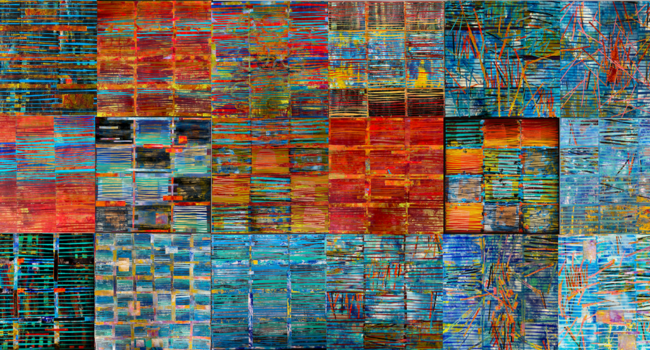Miguel Barros is an artist whose work challenges us to think deeply about our relationship with the environment. Born in Lisbon in 1962, Barros holds citizenship in Portugal, Canada, and Angola, giving him a broad perspective shaped by his diverse life experiences. In 2014, he moved from Angola to Calgary, Alberta, a change that opened new horizons for his creative exploration. With a degree in Architecture and Design from IADE Lisbon, earned in 1984, Barros has seamlessly combined his technical background with his passion for painting, allowing him to craft a unique style that bridges the worlds of structure and imagination.

Barros’ work is deeply influenced by his multicultural background and varied experiences. His art often reflects his concern for the environment, particularly the oceans and the delicate ecosystems that exist within them. His painting “Plastic Oceans” serves as a prime example of this focus. Through this piece, Barros acts as a catalyst, seeking to raise awareness about the pressing issue of ocean pollution and the damage caused by human neglect and wastefulness.
“Plastic Oceans” is more than just a painting; it is a call to action. The work captures the stark reality of pollution in our seas, where plastic, rubber, metal, and various other wastes form a suffocating blanket over the water, endangering marine life and ecosystems. Barros is particularly interested in the interaction between humans and nature—the cause and effect that human actions have on bodies of water around the world.
In his own words, Barros explains, “I strive to communicate the urgency for clarity in this subject matter, which will lead us to see clarity and purity in the water, in the sea, in the oceans.” Through “Plastic Oceans,” he aims to foster a deeper understanding of how human activity impacts the natural world and to inspire a renewed sense of respect and responsibility toward the planet.
The technique behind “Plastic Oceans” is as compelling as its message. Barros employs a mixed media approach, using materials that symbolize both emergency and care. The foundation of the artwork is created on emergency blankets—gold and silver thermal blankets used to protect and save lives in accidents and other tragic situations. On these blankets, Barros applies layers of recycled plastic, laminated and painted over multiple times with oil paint. This process creates a layered texture that mimics the appearance of coral reefs, sand, and the deep sea—all elements of the ocean that we might witness through the transparency of clean and pure water.
Barros’s use of recycled materials is intentional, serving as a metaphor for the urgent need to recycle, reduce waste, and rethink our impact on the planet. The layers of laminated plastic, painted repeatedly, evoke the sense of time, effort, and care required to restore the oceans to their natural state. By using these materials, he invites viewers to reflect on the choices we make in our daily lives and how those choices accumulate, much like the layers of paint in his artwork, to shape the world we live in.
The visual impact of “Plastic Oceans” comes from its unusual materials and techniques. The use of emergency blankets is a powerful symbol—suggesting that our oceans are in a state of crisis and need urgent attention, much like a person who needs care after an accident. The blankets, combined with the recycled plastics, create a textured surface that brings the viewer into the depths of the sea, revealing the hidden and often overlooked consequences of pollution.
Miguel Barros’s artwork offers more than just an aesthetic experience; it’s a form of activism. His paintings encourage us to see beyond the surface, to understand the deeper, unseen damage that pollution inflicts on the environment, and to recognize our collective role in preserving the planet for future generations. “Plastic Oceans” is an invitation to look closely at what lies beneath and to consider the future of our natural world if current trends continue.
In a world where the impact of human activity on nature is increasingly evident, Barros’s work serves as a poignant reminder of the delicate balance between human progress and environmental preservation. His art speaks to a universal truth: that the beauty of our planet is worth fighting for, and that each of us has a role to play in that fight.
By highlighting the consequences of our actions and the urgent need for change, Miguel Barros continues to inspire a new dialogue about sustainability, conservation, and our shared responsibility to the natural world. Through his art, he invites us to rethink our relationship with the planet and to take steps, however small, toward a more sustainable future.

